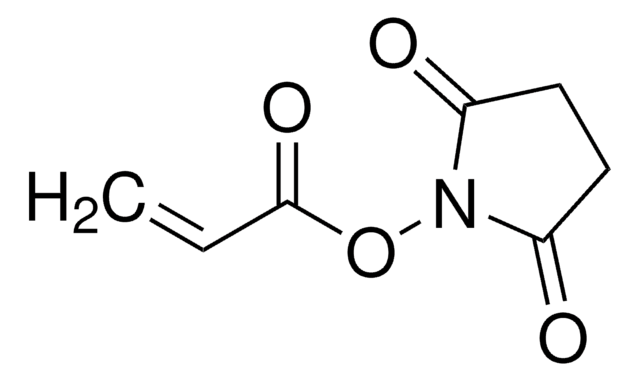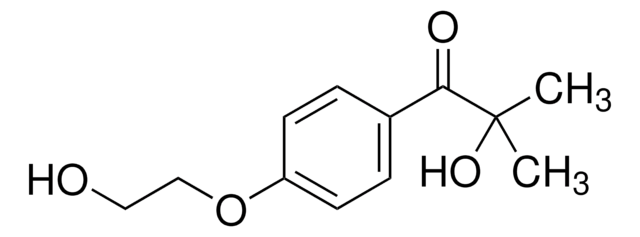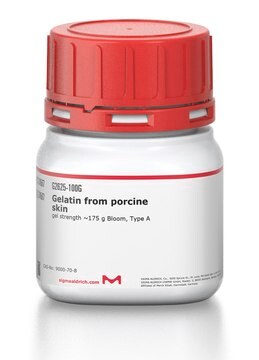推荐产品
應用
Gelatin methacrylate can be used to form cross-linked hydrogels for tissue engineering and 3D printings. It has been used for endothelial cell morphogenesis, cardiomyocytes, epidermal tissue, injectable tissue constructs, bone differentiation, and cartilage regeneration. Gelatin-methacrylate has been explored in drug delivery applications in the form of microspheres and hydrogels.
儲存類別代碼
11 - Combustible Solids
水污染物質分類(WGK)
WGK 3
閃點(°F)
Not applicable
閃點(°C)
Not applicable
其他客户在看
Kelly M C Tsang et al.
Advanced functional materials, 25(6), 977-986 (2015-09-04)
Hydrogels are often employed as temporary platforms for cell proliferation and tissue organization
Kristel W M Boere et al.
Acta biomaterialia, 10(6), 2602-2611 (2014-03-05)
Hydrogels can provide a suitable environment for tissue formation by embedded cells, which makes them suitable for applications in regenerative medicine. However, hydrogels possess only limited mechanical strength, and must therefore be reinforced for applications in load-bearing conditions. In most
Mehdi Nikkhah et al.
Biomaterials, 33(35), 9009-9018 (2012-09-29)
Engineering of organized vasculature is a crucial step in the development of functional and clinically relevant tissue constructs. A number of previous techniques have been proposed to spatially regulate the distribution of angiogenic biomolecules and vascular cells within biomaterial matrices
Preparation and characterization of gelatin-poly(methacrylic acid) interpenetrating polymeric network hydrogels as a pH-sensitive delivery system for glipizide.
Gupta NV, et al.
Indian Journal of Pharmaceutical Sciences, 69(1), 64-68 (2007)
Heemin Kang et al.
Acta biomaterialia, 10(12), 4961-4970 (2014-08-26)
Human induced pluripotent stem cells (hiPSC) are a promising cell source with pluripotency and self-renewal properties. Design of simple and robust biomaterials with an innate ability to induce lineage-specificity of hiPSC is desirable to realize their application in regenerative medicine.
商品
Professor Shrike Zhang (Harvard Medical School, USA) discusses advances in 3D-bioprinted tissue models for in vitro drug testing, reviews bioink selections, and provides application examples of 3D bioprinting in tissue model biofabrication.
Professor Shrike Zhang (Harvard Medical School, USA) discusses advances in 3D-bioprinted tissue models for in vitro drug testing, reviews bioink selections, and provides application examples of 3D bioprinting in tissue model biofabrication.
我们的科学家团队拥有各种研究领域经验,包括生命科学、材料科学、化学合成、色谱、分析及许多其他领域.
联系技术服务部门









